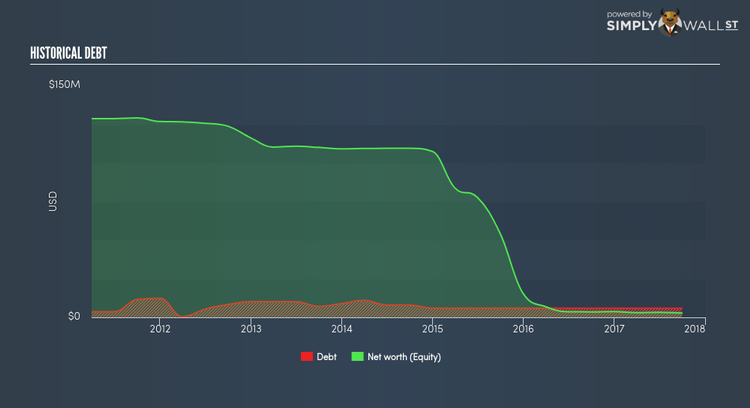Is US. Energy Corp.’s (NASDAQ:USEG) Balance Sheet A Threat To Its Future?

While small-cap stocks, such as US. Energy Corp. (NASDAQ:USEG) with its market cap of US$14.75M, are popular for their explosive growth, investors should also be aware of their balance sheet to judge whether the company can survive a downturn. Companies operating in the Oil and Gas industry, even ones that are profitable, are more likely to be higher risk. So, understanding the company’s financial health becomes vital. Here are few basic financial health checks you should consider before taking the plunge. Though, I know these factors are very high-level, so I’d encourage you to dig deeper yourself into USEG here.
How does USEG’s operating cash flow stack up against its debt?
USEG’s debt level has been constant at around US$6.00M over the previous year made up of current and long term debt. At this stable level of debt, USEG’s cash and short-term investments stands at US$2.52M for investing into the business. Moving onto cash from operations, its trivial cash flows from operations make the cash-to-debt ratio less useful to us, though these low levels of cash means that operational efficiency is worth a look. As the purpose of this article is a high-level overview, I won’t be looking at this today, but you can examine some of USEG’s operating efficiency ratios such as ROA here.
Can USEG meet its short-term obligations with the cash in hand?
Looking at USEG’s most recent US$10.93M liabilities, the company has not maintained a sufficient level of current assets to meet its obligations, with the current ratio last standing at 0.45x, which is below the prudent industry ratio of 3x.
Does USEG face the risk of succumbing to its debt-load?
With total debt exceeding equities, USEG is considered a highly levered company. This is not unusual for small-caps as debt tends to be a cheaper and faster source of funding for some businesses. We can test if USEG’s debt levels are sustainable by measuring interest payments against earnings of a company. Ideally, earnings before interest and tax (EBIT) should cover net interest by at least three times. For USEG, the ratio of 0.69x suggests that interest is not strongly covered, which means that lenders may be more reluctant to lend out more funding as USEG’s low interest coverage already puts the company at higher risk of default.
Next Steps:
With a high level of debt on its balance sheet, USEG could still be in a financially strong position if its cash flow also stacked up. However, this isn’t the case, and there’s room for USEG to increase its operational efficiency. In addition to this, its low liquidity raises concerns over whether current asset management practices are properly implemented for the small-cap. Keep in mind I haven’t considered other factors such as how USEG has been performing in the past. You should continue to research U.S. Energy to get a more holistic view of the stock by looking at:
1. Historical Performance: What has USEG’s returns been like over the past? Go into more detail in the past track record analysis and take a look at the free visual representations of our analysis for more clarity.
2. Other High-Performing Stocks: Are there other stocks that provide better prospects with proven track records? Explore our free list of these great stocks here.
To help readers see pass the short term volatility of the financial market, we aim to bring you a long-term focused research analysis purely driven by fundamental data. Note that our analysis does not factor in the latest price sensitive company announcements.
The author is an independent contributor and at the time of publication had no position in the stocks mentioned.

